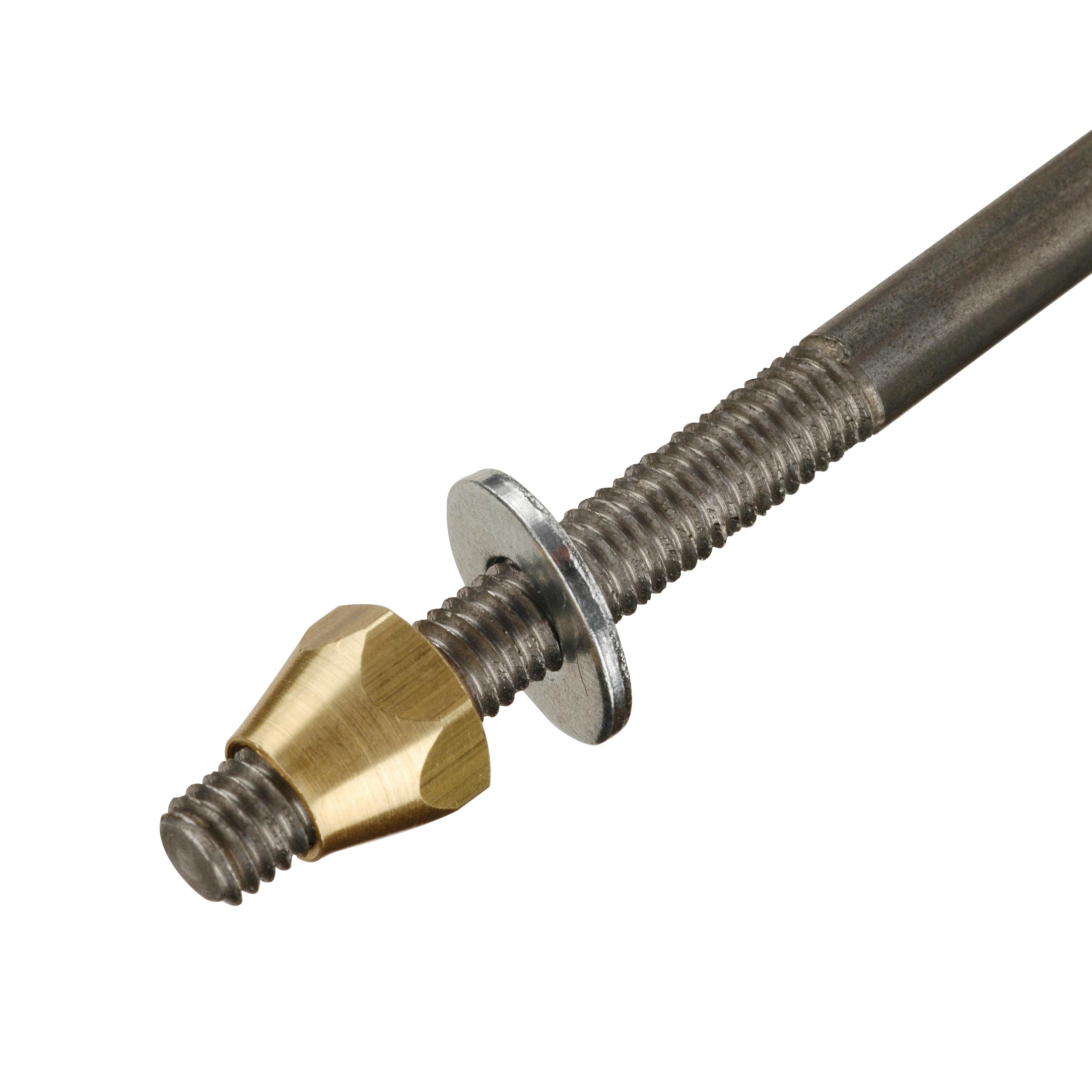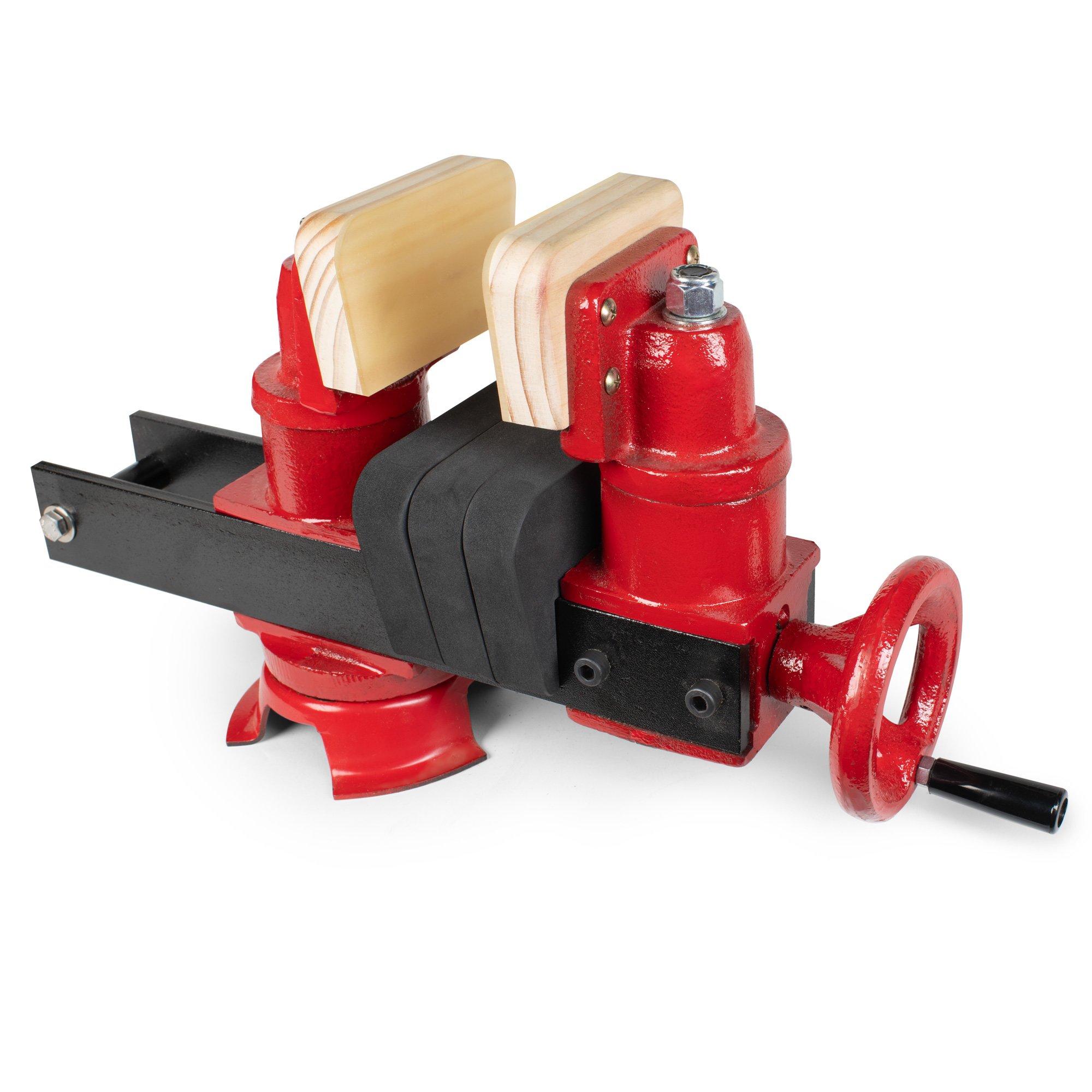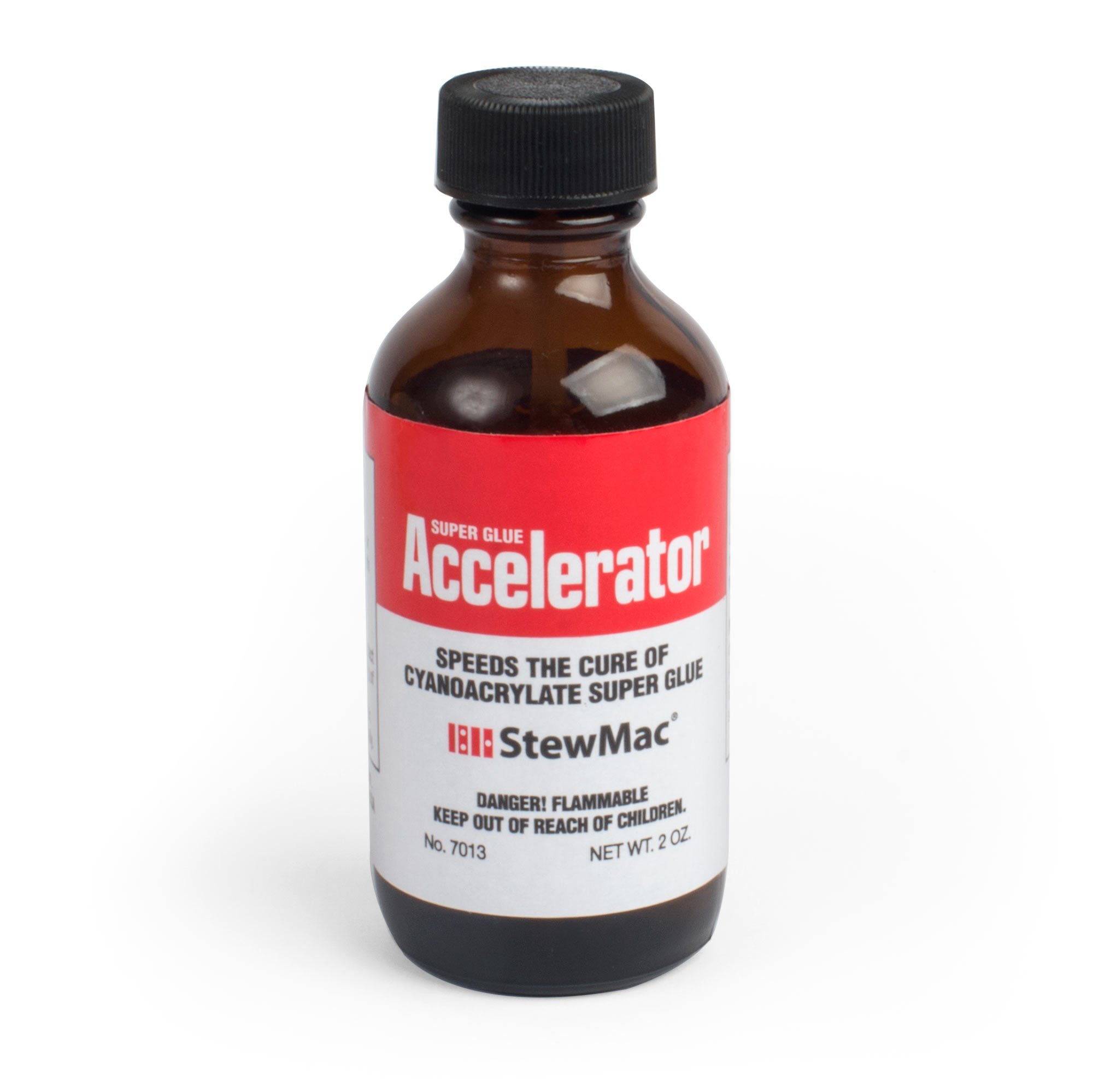How can a table saw cut a curved truss rod channel?
Issue 299 February 23, 2018
How can a table saw cut a curve? Dan Erlewine has a neat tip and a jig you can make in your shop. The result is a precisely curved truss rod channel just like the one in an original Gibson neck.
- Cutting the truss rod access cavity.
- Measuring and reproducing a truss rod curve.
- A neat jig for getting a curved cut on a flat table saw.
Video Transcription
[on-screen text reads: StewMac tools + ideas for guitarmaking. Cutting A Curved Truss Rod Channel]
Dan Erlewine: Today, I'm installing a truss rod access hole in this Gibson style neck. It's as easy as that [on-screen text reads: Truss Rod Access Cutter - stewmac.com] and it didn't take long, did it? Something I'd like to show you is my slot in here is curved. It's not a straight, flat bottom slot. I cut it on a curve. I can show you that exact curve on this cut in half Gibson neck. The reason you want a curved truss rod slot is because when the neck pulls up, which they do, you string up a guitar neck and it pulls up over the years and you get high action. You tighten that curve rod and it comes back down again.
Measure the channel and make a template
The first thing we'll need for making a curved channel are the measurements off this Gibson curve. This little point sticking into that glue line, that's where I measured from. That's the joint between the mahogany and the rosewood board. The deepest part was at the seventh fret. As I went down, it got shallower, and that gave me the basic depths all along the curve, which I was able to copy. I took all these measurements and I transferred them to a stick, connected the dots like that. I sawed this out and got my curve. Now this is just a template for making a jig to go on my table saw.
How the jig gets a curved cut on a flat table saw
A table saw is made for cutting straight lines, and if you cut a truss rod channel like this, it will be straight, not curve. But if you add a curved piece of wood to the table saw, you'd get this jig. The secret is to put a shim on the beginning and the end of your neck block, so it will raise up as it comes onto the curve and cut shallower. And as it passes over the blade onto the other side, it's cutting the deepest part of your channel. Then as the other end with its shim comes over the curve, it starts to raise it back out again, and the result is a curve channel. So let's make that jig.
Make a jig from the template
This was a piece of two by four Douglas fir, and I have my template, curve side down, flat side right flush with that board, and I'm just going to draw that out. This is my arc and I keep moving the arc along. Now there's a long curve I cut off on the band saw. Okay, there's my long curve board. I'm going to pull out this throat and fasten it to the bottom of the board. That's how I mounted it. Now I'm going to cut right up through it with the saw blade. The next step is to put little shims at each end that raise it up off the curve as you cut because I'm going to super glue these shims down [on-screen text reads: Brush-On Accelerator - stewmac.com]. They pop right off with a chisel. Just set that there. Let that dry a second, and I can make a cut. Wish me luck.
The teeth aren't that wide, so I'll make three cuts, one right on the center. One I'll move the fence over a little bit. It won't take much, like a 32nd. Then I'll move it back the other side and I'll get a 3/16th slot. That's it. So there we have it. We have a professional slot cut right through this mahogany blank for a Gibson style 3/16 diameter truss rod, and it's got a curve bottom, and it's very cool.






